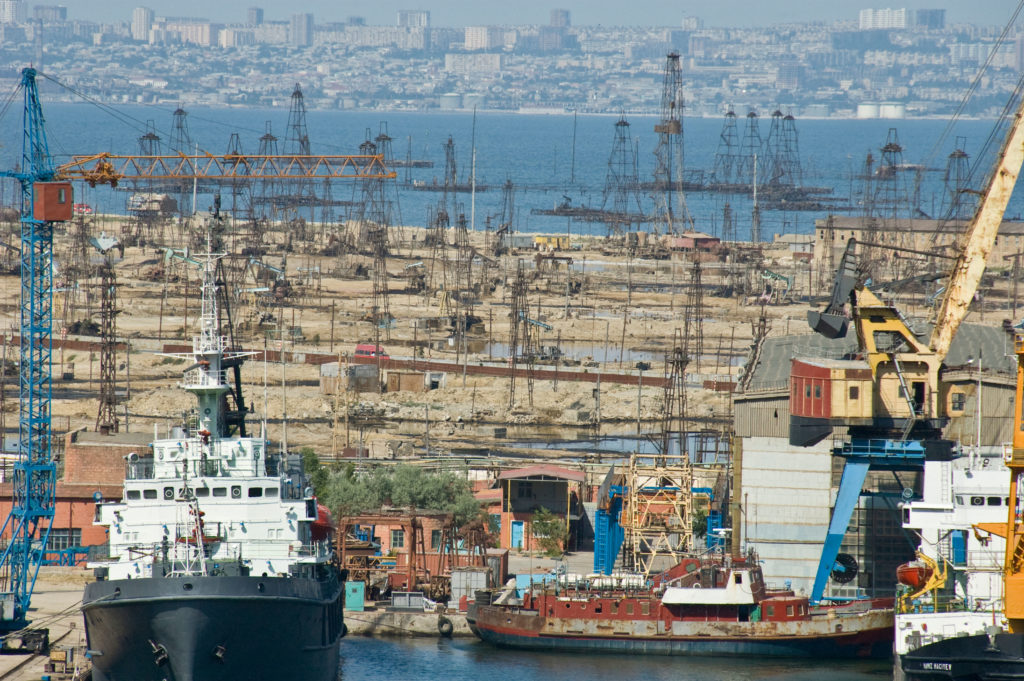BAKU
Azerbaijan sees natural gas output at its major offshore Shah Deniz field at over 24 billion cubic metres (bcm) this year, up from 23 bcm in 2021, an informed official source told the Tribune.
The BP-led consortium which is developing the Shah Deniz project in Azerbaijan has been pumping gas from the offshore field’s first phase since 2006, delivering more than 10 bcm a year of gas to Azerbaijan, Georgia and Turkey through the South Caucasus Pipeline.
The second phase started output in 2018, adding 16 bcm of gas production capacity at its peak to bring total capacity to 26 bcm.
Total gas production in the country is expected to reach 45-46 bcm this year, the source from the government, who did not want to be named, said.
He said that 12-15 bcm of gas would be pumped back to the strata in order to boost oil production, which is declining gradually due to natural reasons.
“Industrial, commercial and other consumers in the country will be supplied with 14 bcm of gas in 2022. Plus, we must take into account the injection and storage of 2.5 bcm of gas in our two gas storage facilities,” the source added.
He said that the remaining volume would be exported to Georgia, Turkey and European countries.
Azerbaijan produced 43.9 bcm of gas in 2021, 23 bcm of which came from the Shah Deniz. About 19 bcm was exported, while the rest was supplied to domestic consumers and used for injection into reservoirs to increase oil recovery.
Azerbaijan almost doubled gas exports to Turkey, Georgia and Europe in 2021 from the Shah Deniz field, official data showed, as the Southern Gas Corridor (SGC) continued to help the country increase its share in the market until now dominated by Russia.
Gas exports from Shah Deniz amounted to 17.618 bcm last year, 43.6 percent up from a year earlier.
Azerbaijan started supplying commercial natural gas to Europe from the second stage of the Shah Deniz project via its $40-billion Southern Gas Corridor in December 2020, when the corridor’s last part, the Trans-Adriatic Pipeline (TAP), became operational. The project hopes to reduce Europe’s dependence on natural gas supplies from Russia, which currently controls 34 percent of the continent’s gas market.
The 878 km TAP pipeline connects to the Trans-Anatolian Pipeline (TANAP) on the Turkish-Greek border in Kipoi, crossing Greece, Albania and the Adriatic Sea before reaching Italy’s southern coast.
Gas to Europe was delivered through the TAP. Exports to Turkey were made through the TANAP and the Baku-Tbilisi-Erzurum pipelines.
Last year, Azerbaijan started production of natural gas from a fifth well on the north flank of the Shah Deniz II field. In July, the consortium has also started gas production at the field’s southeast flank, which consists of four wells, two new flowlines and a number of subsea structures. The flank reached full production rates in the third quarter of 2021. The daily production rates of the Shah Deniz Bravo platform reached the Shah Deniz Alpha rates for the first time. During the first three quarters of the year, the field produced around 16 bcm of gas and around 3 million tonnes (24 million barrels) of condensate in total from the Shah Deniz Alpha and Shah Deniz Bravo platforms.
Azerbaijan’s goal is to eventually supply the European market with 10 bcm of gas a year, including 8 bcm to Italy and a combined 2 bcm to Greece and Bulgaria. This year, the country plans to export 5 bcm to Europe and over 12 bcm to Turkey.

